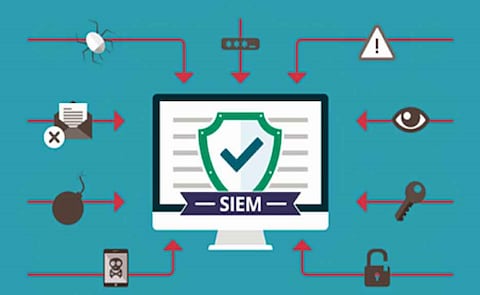What Is SIEM?
SIEM is a thorough cybersecurity method that entails gathering and examining security data from diverse sources within a company. This cutting-edge technology offers a centralized platform for capturing and connecting events from various systems and applications. By harnessing the power of SIEM, companies can elevate their ability to detect and respond to potential threats efficiently and in real time. Moreover, SIEM tools are instrumental in ensuring compliance with regulatory requirements, offering detailed reports and analyses that help organizations adhere to industry standards.
They understand how SIEM functions can significantly enhance a company’s cybersecurity posture. The technology collects log and event data from applications, devices, and systems throughout the network. Once the data is aggregated, it is analyzed to identify unusual activity indicative of potential security breaches. By employing advanced analytics and algorithms, SIEM is capable of sorting through large quantities of data to identify and notify about irregularities, ensuring threats are addressed before escalating into substantial issues.
Benefits of SIEM
SIEM offers numerous benefits to organizations looking to strengthen their security strategies. One of the most compelling advantages of SIEM is its ability to provide real-time monitoring and immediate threat detection. This rapid response is crucial in today’s fast-paced digital environment, where cyber threats constantly evolve. With SIEM, organizations can monitor their networks around the clock, ensuring any suspicious activity is promptly identified and addressed.
Beyond real-time monitoring, SIEM also significantly contributes to effective incident management. SIEM tools allow security teams to conduct thorough investigations and understand the root cause of security incidents by centralizing and consolidating security data. This comprehensive approach facilitates quicker resolutions and helps deploy preventative measures to mitigate future threats. Furthermore, SIEM enhances an organization’s ability to comply with various regulatory and compliance requirements by offering in-depth reporting and audit trails.
Real-Time Threat Detection
One of SIEM’s fundamental advantages is its ability to offer real-time insights into security threats. In a world of increasingly sophisticated cyber threats, immediate detection and response are paramount. SIEM continuously monitors network traffic and user activities, looking for unusual patterns that may indicate a security breach. For instance, an abrupt increase in failed login attempts or unauthorized access to sensitive files would trigger an alert in the SIEM system.
This immediate threat detection is crucial for mitigating risks before they escalate. The faster an organization can identify and counteract a threat, the less likely it is to suffer significant losses. Real-time monitoring provided by SIEM ensures that security teams are alerted to potential issues as soon as they arise, allowing for prompt intervention. The speed and efficiency of this process can mean the difference between a minor security scare and a full-blown data breach.
Integration with Existing Systems
SIEM solutions are designed to seamlessly integrate with various existing systems and applications, enhancing their capabilities and creating a more robust security posture. SIEM provides a holistic view of an organization’s security landscape by working with other cybersecurity tools like firewalls, intrusion detection systems (IDS), and end-organization platforms (EPP). This integration ensures data is collected from all relevant sources, offering comprehensive coverage against potential threats.
For example, integrating SIEM with cybersecurity tools can enhance the detection of threats that might otherwise go unnoticed. SIEM’s interconnected approach means that alerts and events are analyzed in context, providing meaningful insights that help security teams make informed decisions. Consequently, organizations can achieve a fortified defense system that proactively safeguards against cyber threats.
Best Practices for SIEM Deployment
Successfully implementing a SIEM solution requires meticulous planning and execution. There are several best practices that organizations can follow to ensure an effective deployment:
- Clearly defining security objectives and priorities: Before implementing SIEM, it is crucial to understand what the organization aims to achieve. Defining these objectives helps in tailoring the SIEM solution to meet specific needs.
- Ensuring comprehensive data collection: SIEM relies on data from various sources. Thorough data collection from all relevant systems and applications is essential to gaining a complete picture of the security landscape.
- Regularly updating SIEM systems: Cyber threats are continually evolving, and so should the SIEM system. Regular updates are necessary to incorporate the latest threat intelligence and capabilities.
- Conducting routine staff training: The effectiveness of a SIEM solution depends on the proficiency of those managing it. Routine training helps staff stay updated with the latest features, best practices, and response protocols.
SIEM in Action
Consider a global financial institution implementing an SIEM solution to enhance security measures. Shortly after deploying the SIEM system, it detected unusual login activities from multiple regions, pointing to a potential cyberattack. The system’s immediate alerts enabled the institution to take swift action by locking down compromised accounts, thereby preventing unauthorized access to sensitive data.
This proactive response not only averted a possible data breach but also highlighted the effectiveness of SIEM in providing real-time threat detection and resolution. The case underscores the value of having a robust SIEM system, showcasing how it can enable organizations to act swiftly and prevent significant security incidents.
Conclusion
In conclusion, SIEM plays an indispensable role in strengthening modern cybersecurity strategies. By offering real-time threat detection, comprehensive data analysis, and seamless integration with existing systems, SIEM solutions empower organizations to manage and mitigate security risks proactively. Investing in SIEM technology enhances an organization’s ability to detect and respond to cyber threats and ensures continued compliance with regulatory standards. As cyber threats evolve, a robust SIEM system is essential for maintaining a strong security posture and safeguarding organizational assets.
Stay in touch to get more updates & news on Discover Tribune!




